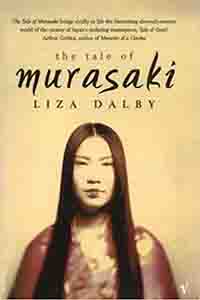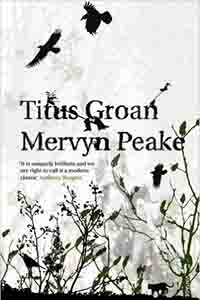“Enter the exotic, entrancing world of the Japanese Imperial court…for a gentle immersion in a world of long ago and far away, The Tale of Murasaki is just the ticket…hypnotic.”
NO MAJOR SPOILERS
I had forgotten all about this book. It had slipped down behind others, unnoticed for a long time. How glad I am that it resurfaced.
I had reread earlier this month (March 2017) the stunning Memoirs of a Geisha, by Arthur Golding, and a few weeks ago Geisha: The Remarkable Truth Behind the Fiction, by Lesley Downer, so was in a Japanese frame of mind. As a teenager I devoured everything the local library had to offer on Japan and as part of my degree I studied Japanese history. I thought that I knew Japan pretty well. How wrong I was.

The Tale of Murasaki is a simply stunning evocation of the Heian period. It is a fictional account of the life of a real Japanese person, Fuji Shikibu, probably the world’s first novelist, who lived a thousand years ago. She wrote The Tales of Genji, that, to her surprise, became well known, popular, and were to change her life.
As the daughter of a minor official of the Japanese court, Fuji, despite her family links, she was not destined to join the court herself. She was well educated, a disadvantage in obtaining a suitable marriage, and very knowledgeable in Chinese literature. Such knowledge in a man was highly regarded, though considered a little old fashioned. In a woman it was considered somewhat odd. Fuji was widely considered a bluestocking. Despite this disadvantage her father arranged a suitable marriage, but Fuji remained a court outsider. This did not, however, stop her writing about the adventures of Prince Genji.
Probably as a result of her proud husband’s influence, Genji comes to the attention of the Emperor and his new Empress. When Fuji is widowed, despite being beyond the usual age for doing so, she is invited to enter the service of the Empress. It is then that she becomes known as Lady Murasaki, one of her most popular characters.
The book now follows the life of the court. In the earlier sections we have glimpses of life outside the court for wealthy young women, and also of life in the wilder parts of Japan. It is from the court life section that we get the most brilliantly beautiful descriptions of what can only be described as a gilded cage.
This is a well written, hard to put down book. The story, based on the diaries and poetry of Lady Murasaki, is well crafted. The descriptions are spellbinding. I cannot recommend this book enough. If you enjoyed Memoirs of a Geisha then you will love this.
A suggestion though. The Heian period is very different to later periods. A little bit of research will increase the power of the descriptions. Before you begin to read The Tale of Murasaki, go to Google and look up Heian costume particularly, it is very different to the kimono of later years. Also look up architecture and gardens, and ox carriages. When they come into the story you will better understand the descriptions.
I do not think that you will regret reading this book. It is an absolute treasure and a delight to read.
Reviewed by:
Philip Meers
Added 30th April 2017




